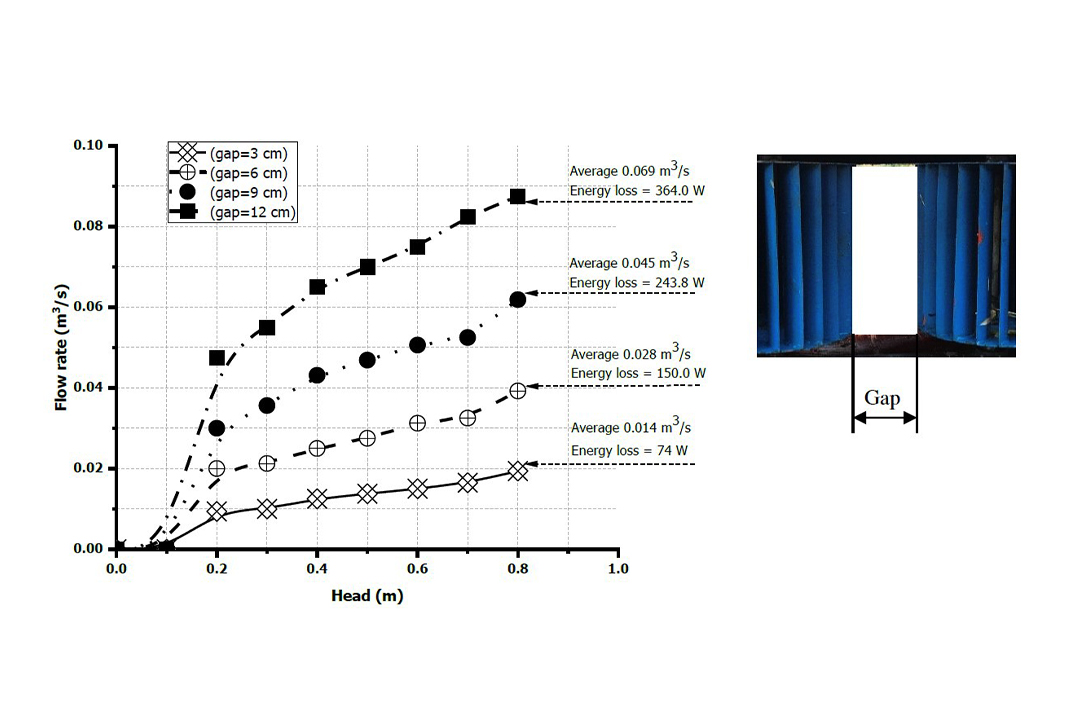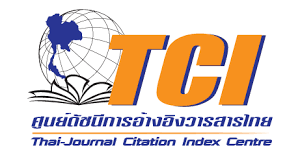Comparing Efficiency between Dual and Single-Axis Vertical Turbine for Electrical Generating System
DOI:
https://doi.org/10.14456/nujst.2023.22Keywords:
vertical turbine, cross-flow turbine, electrical generating systemAbstract
This article reports an efficient comparison between 500W dual and single vertical axis cross-flow turbine for electrical generating systems. The studied parameters were the influence of the distance between dual vertical axes, then, comparing the efficiency with the single cross-flow turbine. From the designation of the L/D ratio as equal to 1, the diameter and height of the dual-axis vertical turbine was 0.3 m while the single-axis vertical turbine was 0.6 m. A chain was used for power transmission with a gear ratio of 1:18 and an induction generator was used as the electrical generating system. The results were that a dual-axis vertical turbine with a 0.8 m water head and at various distances of 3, 6, 9 and 12 cm had an efficiency of 32.36, 28.06, 20.44, and 14.44%, respectively. However, the efficiency decreased with increasing distance between the axes which resulted in a loss of water energy flowing through the axes. The water energy loss was variously 74, 150, 243 and 364 W. In the case of the single-axis vertical turbine, the efficiency was 20.73% which was closes to the dual-axis vertical turbine at a distance of 9 cm. The economic viability of dual-axis vertical turbines is 6.5 years but is 14.77 years for single-axis vertical turbines.
References
Desai, V. R., & Aziz, N. M. (1994). Parametric evaluation of Cross-flow turbine performance. Journal of energy engineering, 120(1), 17-34.
Elbatran, A. H., Yaakob, O. B., Ahmed, Y. M., & Shehata, A. S. (2018). Numerical and experimental investigations on efficient design and performance of hydrokinetic Banki cross-flow turbine for rural areas. Ocean Engineering, 159, 437–456.
Ikeda, T., Iio, S., & Tatsuno, K. (2010). Performance of nano-hydraulic turbine utilizing waterfalls. Renewable Energy, 35, 293–300.
International Hydropower Association. (2021). Hydropower Status Report Sector trends and insights. United Kingdom: IHA central office.
JAG Seabell. (2015). Ultra-low head micro hydro turbine system STREAM Vertical Dual Cross-FlowTurbine. Retrieved from https://www.seabell.jp/english/service/power.html
Lubitz, W. D., Lyons, M., & Simmons, S. (2014). Performance model of Archimedes screw hydro turbines with variable fill level. Journal of Hydraulic Engineering, 140(10), 04014050.
Mockmore, C. A., & Merryfield, F. (1949). The Banki Water Turbine. Oregon State College. Engineering Experiment Station, Bulletin series no. 25.
Quaranta, E., Bahreini, A., Riasi, A., & Revelli, R. (2022). The Very Low Head Turbine for hydropower generation in existing hydraulic infrastructures: State of the art and future challenges. Sustainable Energy Technologies and Assessments, 51, 101924.
Paish, O. (2002). Small hydro power: technology and current status. Renewable and Sustainable Energy Reviews, 6, 537–556.
Alison, D. (2009). Micro-hydro power (Technical brief). Retrieved from https://answers.practicalaction.org/our-resources/item/micro-hydro-power/
Sopian, K., & Razak, J. (2009). Pico hydro: clean power from small streams: Proceedings of the 3rd WSEAS Int. Conf. on Renewable energy sources, 1 Jan 2009 (pp.414-419). Malaysia: Solar Energy Research Institute Universiti Kebangsaan Malaysia.
Vincenzo, S., Costanza, A., Armando, C., Oreste, F., & Tullio, T. (2013). Banki-Michell Optimal Design by Computational Fluid Dynamics Testing and Hydrodynamic Analysis. Energies, 6, 2362-2385. http://dx.doi.org/10.3390/en6052362
Waters, S., & Aggidis, G. (2015). Over 2000 years in review: Revival of the Archimedes screw from pump to turbine. Renewable and Sustainable Energy Reviews, 51, 497–505.

Downloads
Published
How to Cite
Issue
Section
License
Copyright (c) 2023 Naresuan University Journal: Science and Technology (NUJST)

This work is licensed under a Creative Commons Attribution-NonCommercial 4.0 International License.













